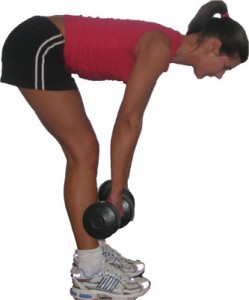 Steve Hanson has been studying health, fitness, and nutrition since 1996. While he now works as a software engineer and web developer, Steve spent several years as a personal trainer and sport nutritionist in southern NH. Steve runs a blog called Project Swole, where health-minded web surfers can go to learn how to build muscle and lose fat more efficiently. Project Swole is a collection of articles, tips, and personal experiences that anyone can use to become stronger, leaner, and healthier.
Steve Hanson has been studying health, fitness, and nutrition since 1996. While he now works as a software engineer and web developer, Steve spent several years as a personal trainer and sport nutritionist in southern NH. Steve runs a blog called Project Swole, where health-minded web surfers can go to learn how to build muscle and lose fat more efficiently. Project Swole is a collection of articles, tips, and personal experiences that anyone can use to become stronger, leaner, and healthier.
The Missing Link
With average gym goers primarily concerned with the development of their upper body, many weight lifters forget or just neglect to train their legs. This becomes a problem with both men and women who are focusing on either building muscle or losing fat.
For men this is a problem because they are often focused on total body functional strength, or aesthetic symmetry and muscle size. For women this is a problem because they often spend too much time on endurance cardio, and end up missing the huge metabolic potential of leg training.
In order to properly integrate leg training into our routine, we need to know why, how, and when to train those wheels.
Why Train Your Legs
 Your legs are the largest group of muscles in your body. By training your legs hard, you will be setting yourself up to realize the most overall strength and fat loss gains when compared to all other muscle groups.
Your legs are the largest group of muscles in your body. By training your legs hard, you will be setting yourself up to realize the most overall strength and fat loss gains when compared to all other muscle groups.
Strong legs will allow you to:
- Pick up anything heavy off the floor or ground.
- Form the foundation of your body’s core strength chain.
- Strengthen your lower back to protect from injury.
- Lift the most weight of all muscle groups.
- Burn the most calories of all muscle groups.
- Stimulate the highest growth hormone release through training.
Think of it this way: the potential growth of any one muscle group will be directly impacted by the conditioning of the muscles in the rest of the body. Moreover, muscular imbalance in the legs could inevitably lead to injury, asymmetry, upper body over-training, and the dreaded nickname “Chicken Legs”.
Some Examples of Leg Training Goals
The best way to approach an overhaul of your workout program is to set up a series of goals for your new training plan. This will give you a focus and a method to qualify your results.
Some leg training goals might include:
- Increase overall leg, lower back, and core strength.
- Condition your cardiovascular system with high rep squats and sprints.
- Add size and girth to the legs through strength and hypertrophy training.
- Practicing and perfecting your form for these demanding compound exercises.
- Improve sprint times.
- Burn fat through the increased metabolic demands of lower body strength training.
The squat is arguably the best exercise that any athlete can perform. Overhead press, bench press, and deadlifts rank right up there too. Sprinting, specifically in conjunction with high intensity interval training (HIIT), is considered the most effective form of cardiovascular work.
When we train our legs with resistance training, we will be focusing on the following compound exercises:
- Squats to work our quads. Squats are #1 on the list of the 5 best leg exercises for the quads.
- Deadlifts to work our hamstrings. Deadlifts are #1 on the list of the 5 best hamstring exercises.
- Good mornings to work our glutes and lower back.
- Lunges to work our legs in a unilateral range of motion.
- Interval sprints for explosive strength and cardiovascular conditioning.
Please return for part 2 of this article Friday 2/13, when you will learn how to construct a HIIT session for sprinting and how to implement an eight-week training program to bring your lower body conditioning up to speed.
Guest Blog Series: Look for the following badge on your favorite health sites to see if they have been a featured guest blogger on DietsInReview.com. See other posts in the Guest Blog series.
If you would like to apply to be featured as a guest blogger, please contact us.


